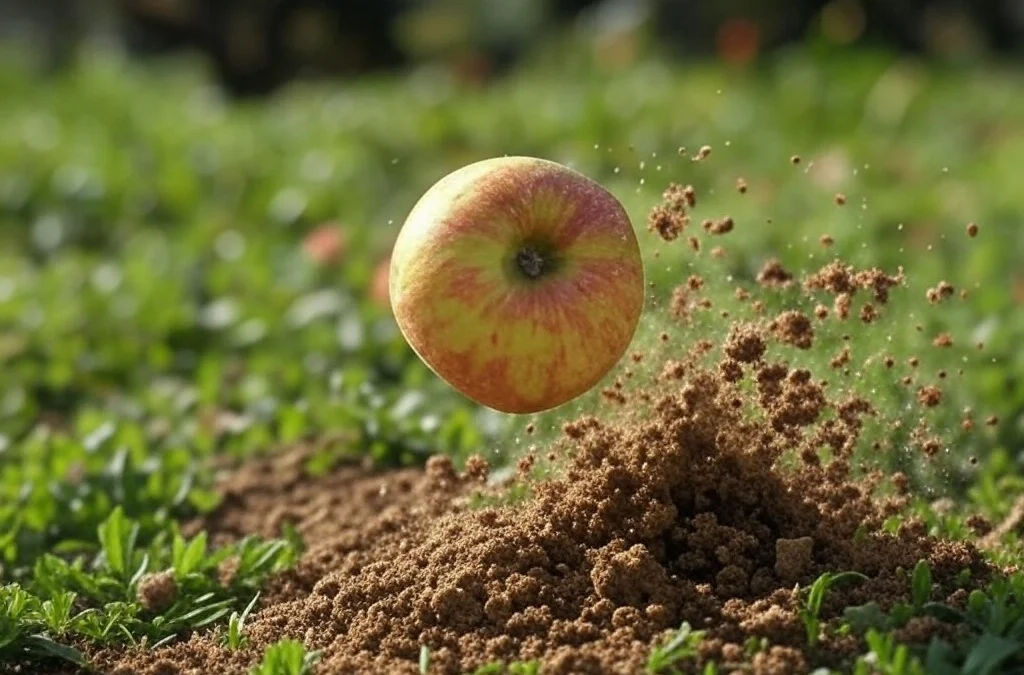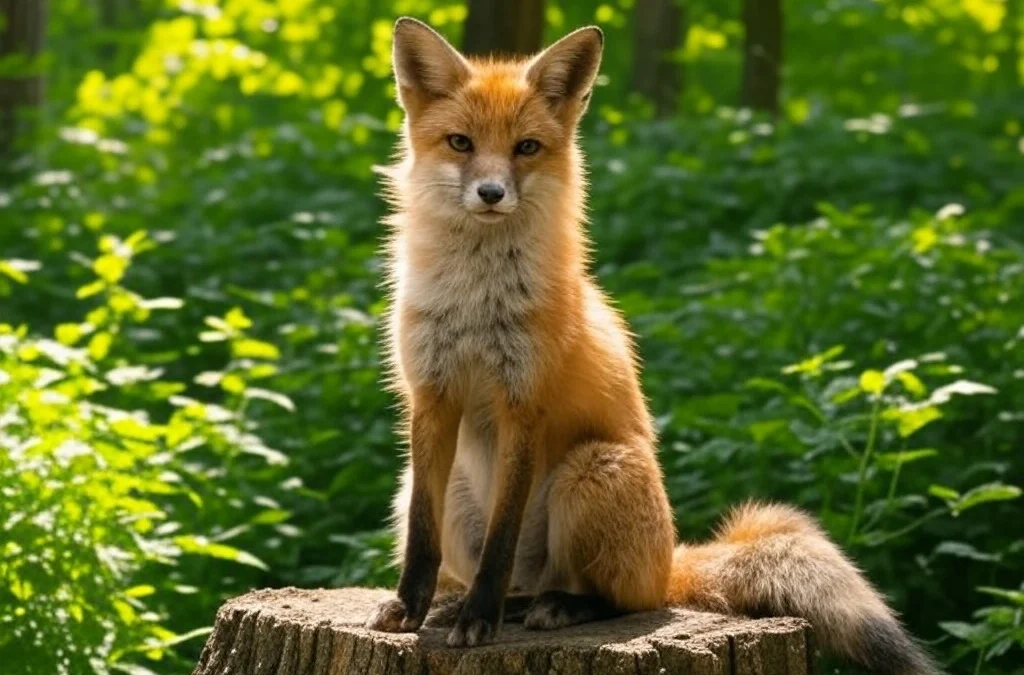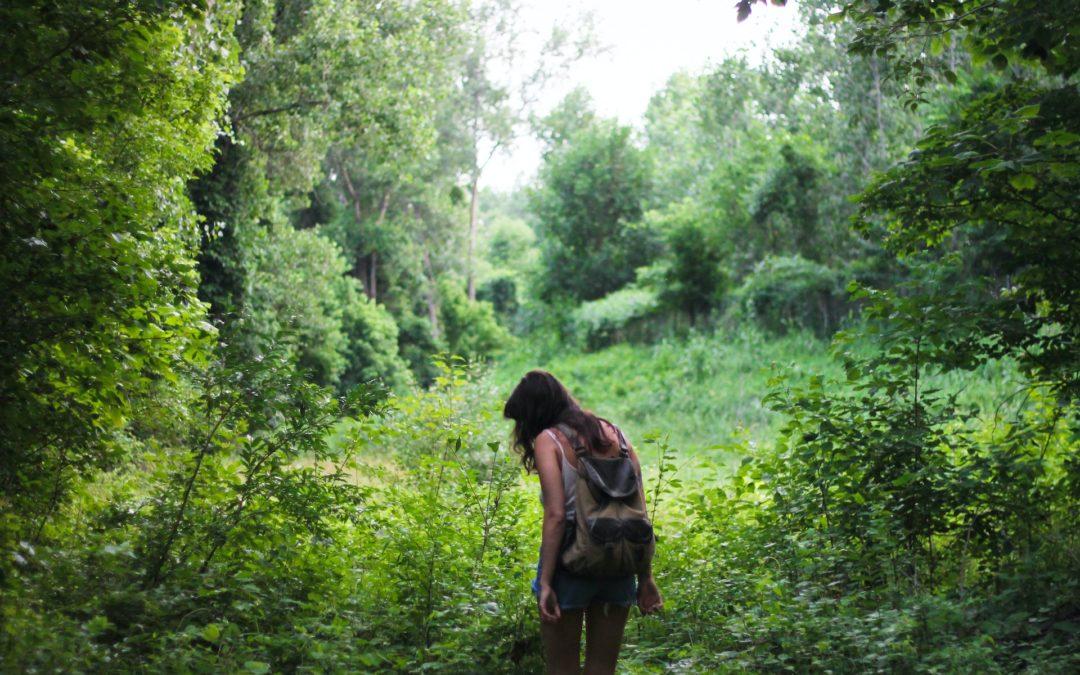Outdoor learning has emerged as a powerful educational tool, transcending traditional classrooms. This article explores 30 diverse examples of outdoor education, providing educators, parents, and learners with a range of ideas to integrate nature-based experiences into their educational journey. These examples showcase the transformative potential of outdoor learning, fostering curiosity, critical thinking, and a deep connection with the natural world.
From scientific explorations of ecosystems to historical reenactments, these outdoor experiences engage learners beyond textbooks. They also promote environmental stewardship, cultivating a generation that values sustainability and conservation.
By highlighting accessible and adaptable outdoor learning opportunities, this article empowers educators irrespective of location or resources. The benefits of outdoor education extend beyond knowledge acquisition, encompassing improved mental and physical health, creativity, problem-solving skills, and social-emotional development.
Best Examples of Outdoor Learning
Outdoor learning is a valuable educational approach that takes place outside the traditional classroom setting, allowing students to engage with their environment and learn through firsthand experiences. Below are some excellent examples of outdoor learning activities, each explained in a detailed and professional manner:
Nature Walks and Field Trips
Nature walks and field trips provide students with an opportunity to explore the natural world and gain a deeper understanding of their surroundings. Whether visiting a local park, nature reserve, or botanical garden, students can observe and interact with various plants, animals, and ecosystems. Through guided activities and discussions, educators can foster curiosity, critical thinking, and environmental awareness.
Gardening and Horticulture
Engaging in gardening and horticultural activities allows students to develop a range of skills while connecting with nature. Through planting, nurturing, and harvesting plants, students learn about biology, ecosystems, and the importance of sustainable practices. Gardening also promotes responsibility, teamwork, and patience, as students must care for and maintain their plants over time.
Science Experiments and Investigations
Outdoor environments offer a wealth of opportunities for conducting hands-on science experiments and investigations. Students can explore topics such as weather patterns, soil composition, biodiversity, and ecological interactions. By actively participating in data collection, analysis, and interpretation, students develop scientific inquiry skills and a deeper understanding of scientific concepts.
Mapping and Orienteering
Mapping and orienteering activities provide students with a chance to navigate and explore their surroundings using maps, compasses, and other tools. Through this process, students develop spatial awareness, map reading skills, and the ability to navigate using landmarks. Additionally, mapping and orienteering foster problem-solving, decision-making, and collaboration as students work together to reach specific destinations.
Outdoor Art and Creative Expression
Outdoor spaces offer a dynamic and inspiring setting for artistic expression. Students can engage in activities such as nature-inspired drawing, painting, photography, or sculpture. These activities encourage students to observe and appreciate the beauty of the natural world while expressing their creativity and emotions. Outdoor art also provides opportunities for interdisciplinary connections, where students can explore the intersection of art, science, and the environment.
Environmental Stewardship Projects
Engaging in environmental stewardship projects empowers students to make a positive impact on their local communities and the environment. Examples include organizing clean-up events, creating recycling initiatives, or designing and implementing sustainable practices within the school. Through these projects, students develop a sense of responsibility, environmental ethics, and a deeper understanding of their role in preserving the planet.
Outdoor Physical Education
Outdoor physical education activities promote holistic development, combining physical fitness with natural surroundings. Students can participate in sports, games, and team-building activities in open spaces or natural settings. This approach encourages physical fitness, enhances motor skills, fosters social interaction, and promotes an appreciation for the benefits of an active lifestyle.
Outdoor Experiential Learning
Experiential learning in outdoor settings involves engaging students in hands-on, immersive experiences. This can include survival skills training, camping trips, or outdoor adventure programs. Through these experiences, students develop resilience, problem-solving abilities, and teamwork skills, while also fostering an appreciation for nature and an understanding of their own capabilities.
Citizen Science Projects
Engaging students in citizen science projects allows them to contribute to real scientific research while learning about the environment. Students can participate in activities such as bird watching, butterfly monitoring, or water quality testing. By collecting and analyzing data, students develop scientific skills, critical thinking, and a sense of environmental stewardship.
Outdoor Literature Circles
Literature circles conducted in outdoor settings offer a unique and immersive experience for students. Reading and discussing literature related to nature or outdoor themes in a natural environment can deepen their connection to the text and inspire creativity. Students can engage in reflective discussions, analyze literary elements, and make connections between the literature and their surroundings.
Historical and Cultural Site Visits
Visiting historical and cultural sites outdoors allows students to connect with the past while exploring significant landmarks and artifacts. Field trips to museums, archaeological sites, or historical landmarks provide opportunities for students to deepen their understanding of history, culture, and societal development. Engaging in guided discussions and interactive activities at these sites enhances students’ appreciation for heritage and historical context.
Outdoor Team-Building and Leadership Activities
Engaging students in outdoor team-building and leadership activities fosters cooperation, communication, and problem-solving skills. Activities such as ropes courses, trust-building exercises, or problem-solving challenges can be conducted in outdoor settings. These activities promote resilience, self-confidence, and empathy, while also cultivating essential interpersonal and leadership qualities.
Outdoor Music and Performing Arts
Outdoor spaces provide unique opportunities for students to explore music and performing arts. Whether it’s playing instruments, singing, or performing theatrical productions, students can showcase their talents while embracing the natural surroundings. Outdoor music and performing arts activities offer a platform for self-expression, creativity, and collaboration, while fostering an appreciation for the arts.
Astronomy and Stargazing
Outdoor spaces provide an excellent setting for studying the night sky and exploring astronomy. Students can learn about celestial bodies, constellations, and planetary movements through stargazing activities. Observing and documenting astronomical phenomena, such as meteor showers or lunar phases, helps students develop scientific inquiry skills and a sense of wonder about the universe.
Outdoor Geology and Rock Collecting
Outdoor environments offer opportunities for students to explore the fascinating world of geology. By examining rocks, minerals, and fossils, students can learn about Earth’s geological processes and the formation of different rock types. Engaging in hands-on activities like rock collecting, geological mapping, and identifying rock formations helps students develop observational skills and an understanding of Earth’s geological history.
Environmental Photography and Videography
Outdoor environments provide stunning backdrops for students to capture and document their surroundings through photography or videography. Students can learn composition techniques, experiment with lighting, and tell visual stories about the environment. This activity promotes artistic expression, enhances observation skills, and encourages students to document and raise awareness about environmental issues.
Outdoor Cooking and Nutrition
Cooking and nutrition activities conducted outdoors provide students with a practical and enjoyable learning experience. Students can learn about healthy food choices, food preparation techniques, and the environmental impact of food production. Engaging in outdoor cooking activities, such as preparing meals using local ingredients or growing and harvesting produce, promotes culinary skills, teamwork, and an understanding of sustainable food systems.
Outdoor Environmental Surveys and Assessments
Students can actively participate in conducting environmental surveys and assessments in outdoor settings. They can measure and analyze factors such as air quality, water quality, or biodiversity in a specific area. Through data collection and interpretation, students gain a deeper understanding of environmental issues and the importance of environmental monitoring and conservation efforts.
Outdoor Language and Literacy Activities
Language and literacy skills can be developed in outdoor environments through various activities. Students can engage in nature journaling, where they observe and describe the natural world, or participate in outdoor storytelling sessions. Additionally, creating outdoor poetry or writing projects inspired by the surroundings fosters creativity, communication skills, and an appreciation for nature’s influence on language and literature.
Environmental Debate and Discussion
Outdoor spaces offer an ideal setting for engaging in lively debates and discussions centered around environmental topics. Students can explore current environmental issues, analyze different perspectives, and present their arguments in an outdoor forum. This activity cultivates critical thinking, research skills, and the ability to articulate opinions while fostering a deeper understanding of environmental challenges and potential solutions.
Outdoor Reflection and Mindfulness
Outdoor environments provide a peaceful and serene backdrop for students to engage in reflection and mindfulness activities. Through guided meditation, journaling, or sensory awareness exercises, students can develop self-awareness, emotional regulation, and a sense of connection with nature. These activities promote well-being, stress reduction, and the cultivation of a positive mindset.
Outdoor Social Studies and Cultural Immersion
Outdoor environments offer opportunities for students to explore social studies and cultural concepts firsthand. They can visit historical landmarks, cultural sites, or local communities to learn about diverse cultures, traditions, and historical events. Engaging in guided discussions and interactive activities in these outdoor settings deepens students’ understanding of social studies and promotes cultural appreciation and empathy.
Outdoor Wildlife Observation and Tracking
Engaging in wildlife observation and tracking activities allows students to develop an understanding of animal behavior, habitats, and ecosystems. Students can use binoculars, cameras, or field guides to identify and document various species they encounter. This activity fosters curiosity, patience, and ecological awareness while promoting a sense of responsibility towards wildlife conservation.
Outdoor STEM Challenges
Outdoor STEM (Science, Technology, Engineering, and Mathematics) challenges provide hands-on opportunities for students to apply STEM concepts in real-world scenarios. Students can design and construct structures, create simple machines, or solve engineering problems using natural materials. These challenges encourage critical thinking, problem-solving, collaboration, and the application of scientific principles.
Outdoor Water Exploration and Study
Outdoor water exploration activities allow students to investigate the properties and importance of water. They can study aquatic ecosystems, conduct water quality testing, or engage in water conservation initiatives. By actively participating in water-related experiments and investigations, students develop scientific inquiry skills, ecological literacy, and a sense of responsibility towards water resources.
Outdoor Entrepreneurship and Business Ventures
Engaging students in outdoor entrepreneurship and business ventures allows them to apply their knowledge and skills in real-world contexts. Students can set up and manage small businesses, such as a farmers’ market, a plant nursery, or an outdoor adventure program. This activity promotes entrepreneurial thinking, financial literacy, and hands-on experience in running a business.
Outdoor Survival Skills Training
Engaging students in outdoor survival skills training allows them to develop essential life skills while fostering resilience and self-reliance. Students can learn skills such as fire-building, shelter construction, navigation, and wilderness first aid. This activity promotes problem-solving, critical thinking, and adaptability while instilling confidence and a deeper connection with nature.
Outdoor Environmental Journalism
Outdoor environments provide an excellent backdrop for students to explore environmental journalism and storytelling. Students can conduct interviews, write articles, or create multimedia projects that raise awareness about environmental issues and conservation efforts. This activity fosters research skills, media literacy, and the ability to communicate environmental messages effectively.
Outdoor Archaeology and Paleontology
Engaging students in outdoor archaeology and paleontology activities allows them to explore the history of the Earth and its inhabitants. Students can participate in archaeological digs or fossil hunting expeditions to uncover artifacts and fossils. This hands-on experience promotes scientific inquiry, critical thinking, and an appreciation for cultural heritage and Earth’s geological past.
Outdoor Service Learning Projects
Engaging in outdoor service learning projects allows students to contribute to their communities while applying classroom knowledge. Students can participate in activities such as environmental restoration, community gardening, or designing accessible outdoor spaces. This activity promotes civic engagement, social responsibility, and a deeper understanding of community needs and sustainable practices.
Outdoor Sensory Exploration
Outdoor spaces provide a rich sensory environment for students to explore and engage their senses. Students can participate in sensory walks, where they focus on observing and describing the sights, sounds, smells, textures, and tastes in nature. This activity promotes mindfulness, sensory awareness, and the appreciation of the natural world’s beauty and diversity.
Outdoor Coding and Robotics
Outdoor spaces can serve as a creative playground for students to explore coding and robotics. Students can program and control robots to navigate through obstacle courses or interact with the natural environment. This activity promotes computational thinking, problem-solving, and the integration of technology with the outdoors.
Outdoor Mathematics Activities
Mathematics can come alive in outdoor environments through various activities. Students can engage in geometry by identifying and measuring angles in architectural structures or natural objects. They can collect and analyze data related to distances, heights, or volumes. Additionally, mathematical concepts such as patterns, symmetry, and proportions can be explored through the observation of natural phenomena.
Outdoor Historical Reenactments
Outdoor historical reenactments allow students to immerse themselves in significant historical events. Students can research, plan, and reenact historical scenes, bringing history to life. This activity promotes historical understanding, empathy, and the development of historical analysis and interpretation skills.
Benefits of Outdoor Learning
In recent years, educators and researchers have recognized the powerful impact that outdoor learning can have on students’ academic, social, and emotional development. Embracing the natural environment as a classroom, outdoor learning offers a refreshing departure from traditional indoor education, fostering a unique blend of experiential and hands-on learning opportunities. This section delves into the manifold benefits of outdoor learning, shedding light on how it enhances the educational experience and promotes holistic growth in learners of all ages.
- Engaging and Multi-Sensory Learning
Outdoor learning immerses students in a dynamic and ever-changing environment, stimulating their senses and fostering a deeper connection with the subject matter. Unlike the confines of a classroom, the great outdoors provides a wealth of sensory experiences, allowing learners to see, hear, smell, touch, and even taste aspects of their surroundings. This multi-sensory engagement not only enriches learning but also improves information retention and comprehension, as students form lasting associations between concepts and real-world experiences. - Encouraging Curiosity and Inquiry
The outdoor environment inherently sparks curiosity, inviting students to explore and discover the wonders of the natural world. Whether observing a crawling insect, investigating the life cycle of plants, or deciphering the complexities of ecosystems, outdoor learning nurtures a sense of wonder and encourages students to ask questions, seek answers, and engage in critical thinking. By fostering curiosity and inquiry, this approach cultivates a love for lifelong learning, empowering students to become active seekers of knowledge. - Promoting Health and Well-being
Spending time outdoors has numerous physical and mental health benefits for students. Research suggests that exposure to natural environments can reduce stress, improve concentration, and enhance overall well-being. Outdoor learning allows students to breathe in fresh air, soak up vitamin D from sunlight, and engage in physical activities that promote fitness and motor skills development. Additionally, being in nature promotes mental relaxation, rejuvenation, and a sense of connectedness, contributing to improved mental health and resilience. - Enhancing Social Skills and Collaboration
Outdoor learning creates an ideal setting for developing social skills and fostering collaboration among students. Working together to solve challenges, navigating unfamiliar terrain, and engaging in group activities build teamwork, communication, and interpersonal skills. Students learn to negotiate, share responsibilities, and value diverse perspectives, all while building lasting bonds with their peers. The natural environment often provides opportunities for cooperative learning and problem-solving, promoting a sense of collective achievement and mutual support. - Environmental Awareness and Stewardship
Exposure to the outdoors nurtures a deep appreciation and understanding of the natural world, instilling a sense of environmental responsibility and stewardship. Outdoor learning encourages students to engage in ecological studies, learn about sustainable practices, and develop a profound respect for the delicate balance of ecosystems. By connecting with nature firsthand, students develop a sense of personal responsibility to protect and preserve the environment, paving the way for environmentally conscious citizens and future leaders.
Outdoor learning offers a multitude of benefits that extend beyond the traditional classroom setting. By embracing the natural environment as a dynamic and experiential learning space, educators and parents can foster holistic growth and development in students and children. The integration of outdoor learning into educational practices holds immense potential for creating transformative educational experiences.
For teachers and parents interested in incorporating outdoor learning into their approach, several key recommendations can guide their efforts. Firstly, recognizing the educational value of natural spaces such as parks, gardens, and nature reserves is crucial. These areas can serve as alternative classrooms, providing students with hands-on experiences that connect them with the natural world.
Nurturing curiosity and encouraging inquiry-based learning is another important aspect of outdoor education. By prompting students to ask questions and engage in critical thinking about their surroundings, educators and parents can cultivate a sense of wonder and promote deep learning. Encouraging students or children to document their observations and findings through journals, drawings, or photography further enhances their connection with the subject matter.
Collaborative learning is a valuable aspect of outdoor education. Designing activities that require teamwork, collaboration, and communication among students or children fosters social skills and a sense of collective achievement. Through cooperative projects and problem-solving tasks, learners develop important interpersonal skills that will serve them well in their future endeavors.
Ensuring safety and appropriate supervision during outdoor learning activities is of paramount importance. By conducting thorough risk assessments, providing necessary safety equipment, and adhering to local regulations and guidelines, teachers and parents can create a secure and nurturing learning environment.
Engaging with local resources and experts adds depth and authenticity to outdoor learning experiences. Tapping into the knowledge and expertise of nature centers, environmental organizations, or professionals in the field enhances students’ understanding and connection to the natural world. Collaborating with these resources can enrich the educational journey and provide valuable opportunities for students or children to learn from experienced individuals.
Furthermore, involving parents and the community in outdoor learning initiatives creates a sense of shared responsibility and reinforces the value of these experiences. Organizing field trips, nature walks, or volunteer activities that encourage family participation and community engagement strengthens the impact of outdoor learning and broadens its reach.
By implementing these recommendations, educators and parents can create meaningful and engaging outdoor learning experiences for students or children. The benefits of outdoor learning encompass academic engagement, social skill development, environmental awareness, and overall well-being. Through the power of nature, we have the opportunity to inspire a lifelong love for learning and cultivate a generation that values and protects the world around them.
Below, you can watch a very insightful video about the benefits of outdoor learning.
Read also: Top 100 Essential Travel Items
The Most Popular on BitGlint

40 Social Dilemma Examples in the World & Real Life
Social dilemmas are everywhere. They shape the choices we make at work, in our communities, and even on a global...

30 Favor Examples & Definition
Doing a favor means helping someone without expecting anything in return. It’s an act of kindness that can strengthen...

30 Naivety Examples & Definition
Naivety is something most people experience at some point in their lives. It often starts in childhood, but for some,...

20 Chronology Examples & Meaning
Chronology is something we use more than we realize. It shows up in conversations, in how we remember the past, and in...

30 Wishful Thinking Examples & Meaning
Wishful thinking is something we all do at some point. You hope things will turn out fine—even if there’s no real...

20 Examples of Gravity & What Gravity Really Is
Gravity is one of the most important forces in the universe, but many people don’t fully understand what it really is...

20 Examples of Secondary Consumers in the Food Chain
Secondary consumers are animals that eat other animals—usually herbivores that feed on plants. They’re an important...
Get Inspired with BitGlint

